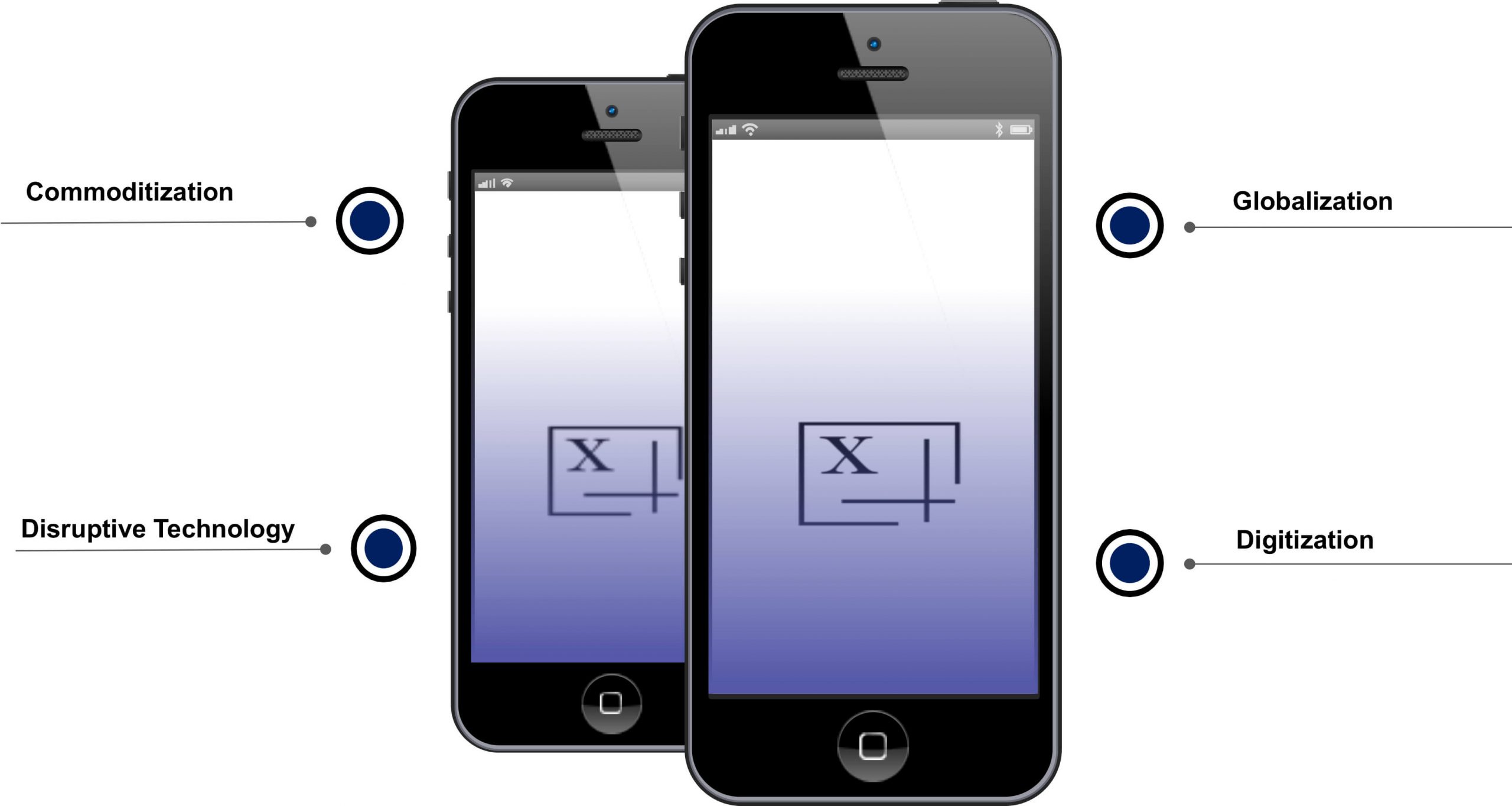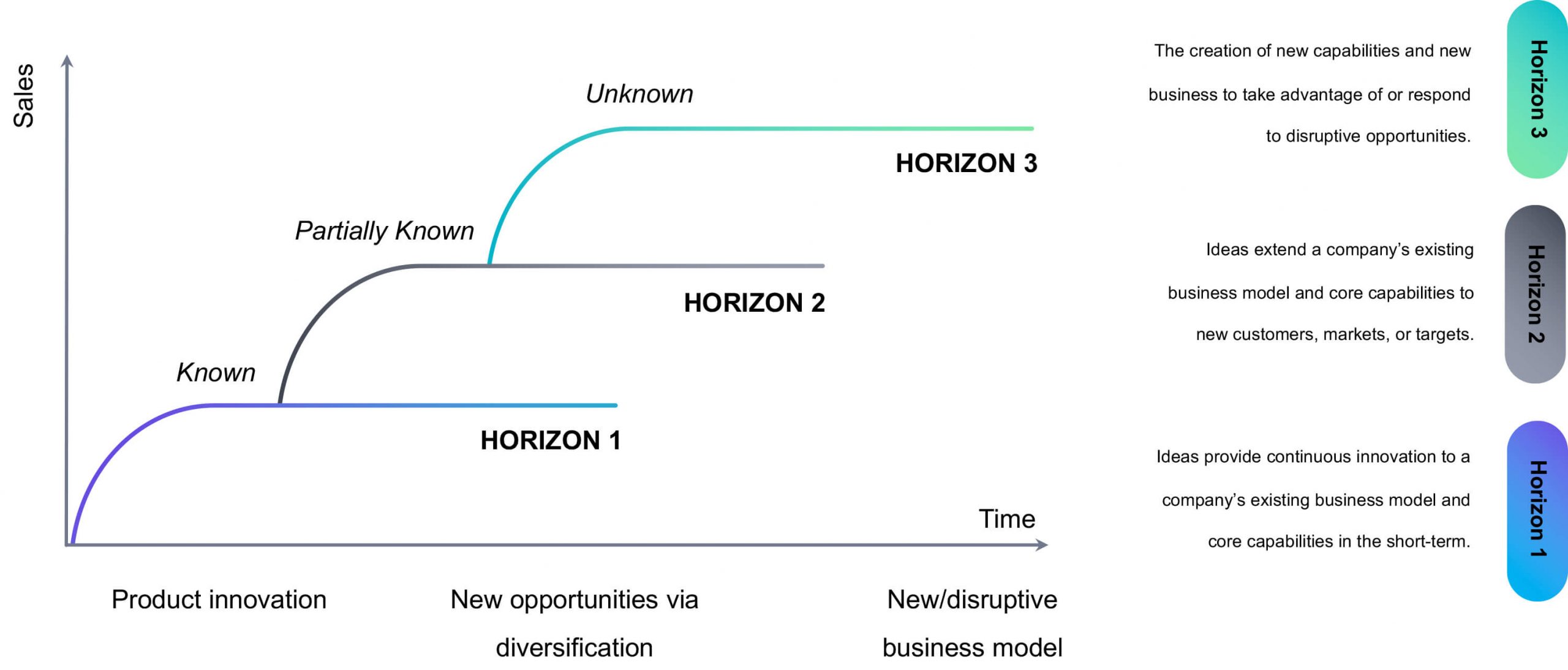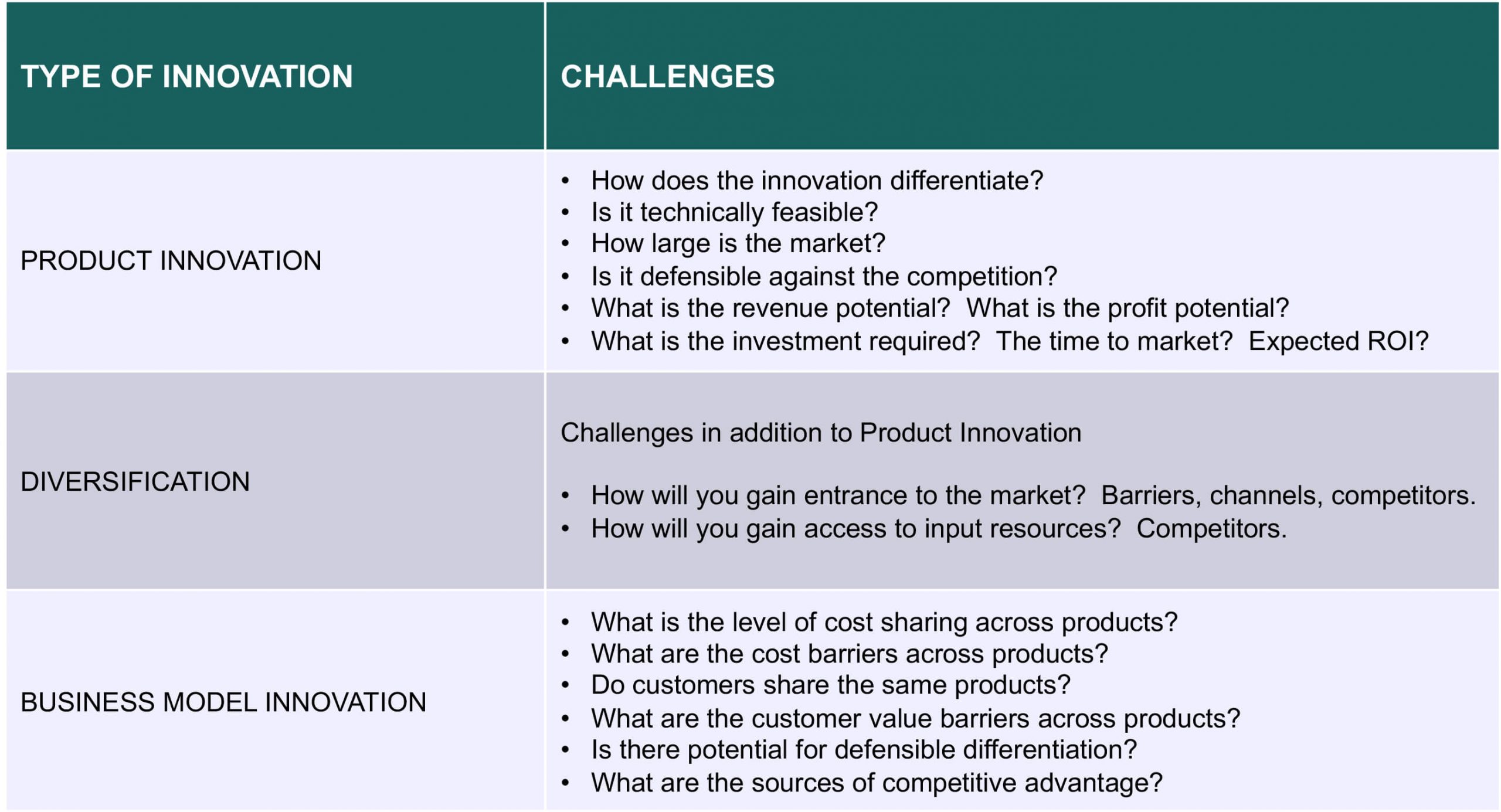Innovation is the largest lever of business growth. Leading corporations understand its importance and are engaged in innovation projects worldwide. It stands to reason that innovating companies are leaders in their industries:
- Automotive: Tesla Motors, Toyota, BMW
- Consumer & Retail: Amazon, Netflix, Under Armor
- Energy: BP, China Petroleum, Exxon Mobil
- Industrial Products: GE, Du Pont, Dow Chemical
- Technology: Apple, Google, Facebook
- Transport & Travel: South West Airlines, Uber, Airbnb
When conducted properly, innovation provides the largest potential for value creation as a result of increased market share and profitability, both. Not surprisingly, the aspirations of new products or services are high. However, innovation is risky. Roughly 90% of innovations fail as firms are met with overwhelming challenges.
THE DRIVERS
Four market forces drive innovation, and while each is paramount, multiple drivers are often at play.
The Drivers of Innovation

Commoditization: Old products eventually progress to maturity in their life-cycle spectrum. Aging product portfolios present two types of risk: (1) product obsolescence, and (2) substitution by newer products, both of which push companies to innovate.
Globalization: New firms enter the global field from emerging economies, particularly India and China, as low-cost/high capability competitors. Others build global volume off a common platform to derive economies of scale worldwide. As a result, firms need to adapt and innovate to maintain their relevance.
Disruptive Technologies: Technological advancements, process improvements, new computing platforms and leading edge applications push the industry into higher levels of competitiveness. Consequently, companies need to adapt and innovate or else fall by the wayside.
Digitization: Digital value chains, e-businesses, smart products, smart machines, and the “internet of things” disrupt brick-and-mortar businesses and continue to shape new business models thanks to consumer pull and technology push.
THREE TYPES OF INNOVATION
The rationale for innovation should be the articulation of one of these archetypes of innovation strategy. The explanation must get beyond a simple notion of revenue growth or value creation, which may sound enticing, but needs to be spelled out in specific, measurable and actionable terms.
The Three Horizon Model of Innovation

Product innovation
Product innovation is the introduction of a new good or service in the current market. Examples of product innovation include breakthrough products or improved products with enhanced quality, lower cost, and overall higher performance. A business that can differentiate its product(s) from competitors in the same industry will be able to create significant value.
A current example of product innovation is the development of autonomous vehicles. Newcomers to the auto industry, Tesla, Google, Apple and Uber, are miles ahead in their product development, and are displacing industry stalwarts, such as Ford, General Motors, and Volkswagen, who are not able to adapt to the new landscape fast enough. While innovating tech companies are pushing toward high levels of driverless capability thanks to their ability to use artificial intelligence, traditional automakers have focused primarily on lower levers of automated driving, such as braking and cruise control. In the last year, Tesla’s market value has increased by 44% to $52.9 billion, while Ford’s market cap has lost 20% of its value down to $42.7 billion in the same period.
Diversification
Diversification is the strategy of entering a new market with a new product for that new market. This strategy is very risky as the company doesn’t have experience in the new market and doesn’t know if the product will be successful.
An example of a successful diversification strategy is that of Steel Dynamics Inc. (SDI). As a manufacturer of structural steel, in 2010 the company entered the North American market for standard-strength railway rail. In 2012, SDI announced its entry into the premium rail market. The addition of premium rail was accomplished through a modern universal mill capable of rolling 320-foot-long rails, which welded together make 1,600-foot-long rails that have fewer welds than the industry standard. SDI’s premium long rail has five welds compared to 19 welds commonly provided by its competitors’ rail.
As a result of a successful diversification strategy, the company was able to displace the two top global players, including Arcelor Mittal’s Stilton plant and Evraz’ Rocky Mountain plant, and established dominance in the North American market for steel rails.
Business model innovation
This strategy involves refocusing the business around a clear customer need, then realigning the cost structure and the profit formula to the new value proposition.
Unigraphics Solutions (UGS) is a prime example of a business model innovator. UGS coupled Its core CAD/CAM/CAE design software with an hyper-efficient IT platform in the cloud and turned the mechanical design world on its head. With its business model innovation, UGS was able to outpace Dassault/IBM, Parametric Technologies, and SDRC, and emerge as the industry leader, generating growth of 400% over 15 years.
THE CHALLENGES
Successful innovation requires getting winning technologies to market in record time. The objectives are the following:
- Deliver a new product/technology with the highest level of customer satisfaction, and
- Get to market quickly, ahead of competitors
The complexity of achieving both objectives at once presents a significant challenge even to the most advanced companies in innovation. In addition, each type of innovation presents its unique set of challenges.
The Challenges of Innovation


